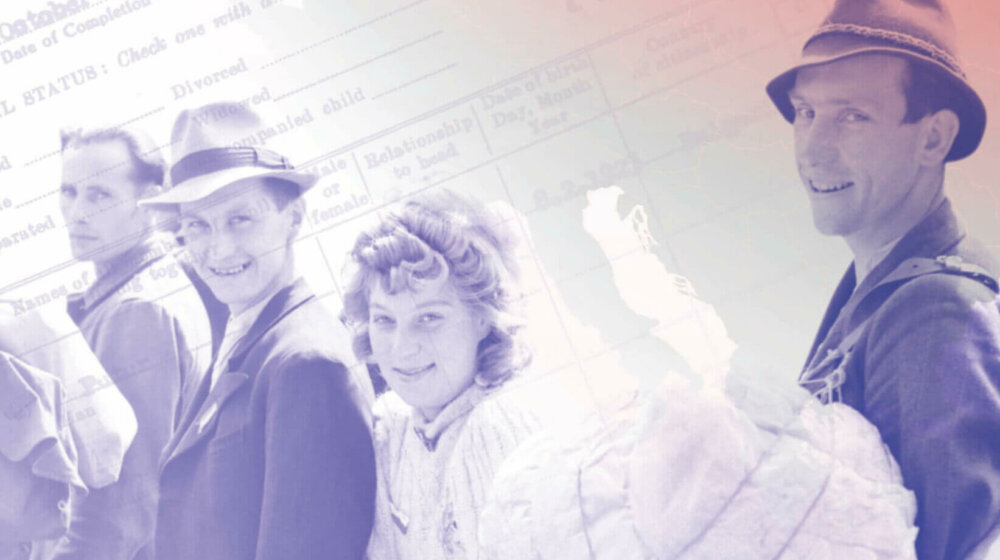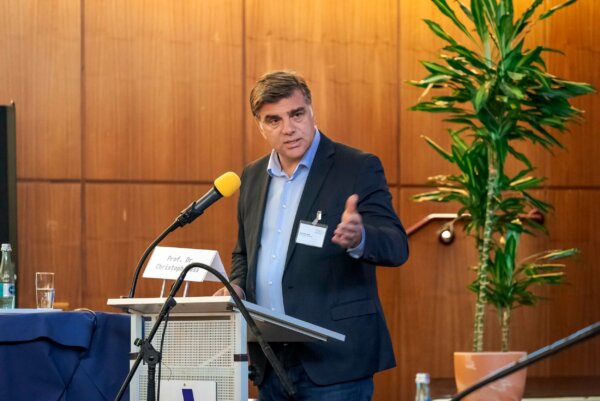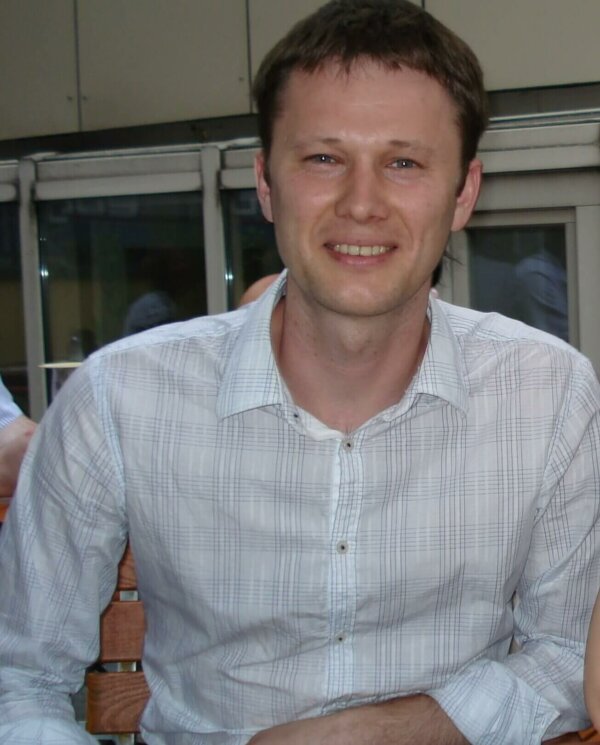An innovative and interactive web portal on Nazi forced labor and migration

Following the Second World War, there was a global wave of migration. Millions of former forced laborers and other victims of Nazism did not want to return to their native countries. The web portal “Transnational Remembrance of Nazi Forced Labor and Migration” is devoted to these so-called Displaced Persons (DPs) and their efforts to resettle or emigrate. You can learn more about the project here and find out about its objectives by reading the statements of our project partners.
“Transnational Remembrance of Nazi Forced Labor and Migration” shows the paths travelled by selected DPs on a map of the world. You can access data relating to their persecution and migration at the click of a mouse. The interactive portal is packed with information and offers enormous potential for research and education: Not only does it invite students to explore, it also encourages them to join in and develop their own projects.
There are three different ways to explore the life paths of the people included in the portal
- An Interactive Map shows a graphical representation of the paths their lives took. Filter functions make it possible to display the biographical information of individual people or entire groups (e.g. DPs who emigrated to Australia, for example). Users can select places or dates. They can access documents in the Arolsen Archives (CM/1 files from the IRO) that provide information on the persecution suffered by the DPs as well as on their plans for the future.
- Graphical, multi-media “Story Maps” explain the biographies of specific groups, e.g. the group of stateless DPs.
- The portal also provides carefully prepared materials for workshops that reveal the project’s potential for use in teaching history.
“Transnational Remembrance of Nazi Forced Labor and Migration” is available in English and was created by the Arolsen Archives in partnership with three other organizations. The project was funded by the Foundation “Remembrance, Responsibility and Future” (EVZ).
Points of view: On the aims of the project, its focus, and the partnerships involved
What does the project aim to do exactly? Did the various partner institutions of the Arolsen Archives each have their own special focus? And what do they all have to say about the experience of working together? We put these questions to our partners! We interviewed Christoph Rass (Professor at the Institute for Migration Research and Intercultural Studies at the University of Osnabrück), Ismee Tames (Director of Research at NIOD Institute for War, Holocaust and Genocide Studies), and historian Aliaksandr Dalhouski (History Workshop Leonid Lewin, Minsk). Their answers provide some insight into the work we did together.
»So looking back at history also helps us to understand the present better – and can help show us that we are very able to help people and to manage ‘refugee crises’ in a humanitarian way when there is a broad base of international cooperation that is widely recognized.«
Christoph Rass, Professor of Historical Migration Studies at the University of Osnabrück

Christoph Rass, Professor of Historical Migration Studies at the University of Osnabrück
Looking back helps us to understand the present better
„Displaying the paths of persecution of Displaced Persons on an Interactive Map of the world provides a visual representation of how war, persecution, and forced labor turned these people’s lives upside down; it shows how and where they survived and how they later tried to find a place to live out the rest of their lives. Refugees all over the world are in a very similar situation today. So looking back at history also helps us to understand the present better – and can help show us that we are very able to help people and to manage ‘refugee crises’ in a humanitarian way when there is a broad base of international cooperation that is widely recognized.“
What was your main focus during the project?
“The migration research team at IMIS has some experience of evaluating mass personal data in historical contexts and was mainly responsible for data modelling and for setting up our geographical information system. We were confronted with questions of a very technical nature, such as how to visualize the journeys the Displaced Persons took and the places where they stopped on the way.
At the same time, we had to deal with the fact the CM/1 files are always the record of a negotiation between an IRO “Eligibility Officer” on the one hand, who had the power to grant DP status, and people who wanted to obtain DP status in order to rebuild their lives on the other. So there are a lot of ambiguities in the files and we need to react to them. The information they contain on “nationality,” or “ethnicity,” or on the routes or the circumstances of deportations are not simply “the truth,” this information is always provided and interpreted with reference to the context.
So we have to “fracture” the apparent lack of ambiguity that is created by digital visualizations again and again in order to make these kinds of uncertainties visible and to reveal the process of negotiation which took place between those who were seeking help and the institutions they turned to. That is why direct digital access to the files in the Arolsen Archives is always so important. The portal is a key to the files and to a great many fates. But their complexity often only comes to light on a close examination of the documents themselves.”
What impression did you have of working on this project and of the cooperation between the institutions?
“The cooperation between the Arolsen Archives, the NIOD, the History Workshop, and our institute was one of the particularly positive aspects of the project. Specialists from very different fields of work and research came together, and we started off by engaging in an intensive process of discussion to establish an understanding between the various approaches to the sources and the various different ways of reading them. We then used this as the basis for developing and implementing a good concept for the portal that took the academic, the archival, and the educational perspective into account. This international and interdisciplinary cooperation was a very important experience for us. Parallel to the project, we offered a series of seminars in Osnabrück which enabled us to work intensively in the Arolsen Archives with our students. At the same time, we have now also organized three or four conferences in Bad Arolsen, Vienna, Osnabrück, and Amsterdam, and these events gave us the opportunity to discuss questions that concerned us in connection with the project with a great many other colleagues. The Arolsen Archives have become a very central point of reference for us, both as an archive and as a partner organization in the field of research. The archival holdings provide Historical Migration Studies – and Digital Humanities approaches in particular – with an innovative and extremely profitable opportunity to explore questions connected with flight and violent migration in the 20th century at a fundamental level as well as questions about how to deal with the processes that follow.”
»Lines on a map may seem so straight and clear. However, they reflect multilayered experiences of war, displacement, and resettlement. That’s what I wanted to highlight in the Story Maps.«
Ismee Tames, Director of Research at the NIOD Institute of War, Holocaust and Genocide Studies
Lines on a map may seem so straight and clear
„I focused on the story maps and how they could link to the samples and thus help the users of the interactive map to make sense of the trajectories of DPs that they would find while working with the map. Lines on a map may seem so straight and clear. However, they reflect multilayered experiences of war, displacement, and resettlement. That’s what I wanted to highlight in the Story Maps.“
What does the project aim to do? And what is new about it?
“For me the goal and indeed challenge of this project was how we can further develop a mixed methods approach: combining qualitative and quantitative, analogue and digital approaches in order to better understand what it meant to be a Displaced Person in the early postwar period. That’s why we made both an interactive map and some story maps exploring key topics around the phenomenon of displacement.”
What impression did you have of working on this project and of the cooperation between the institutions?
“While all institutions had their own tasks and expertise, I very much understood this project as one of collaboration: we all shared the same goal and a similar vision of how to explore this topic of mass displacement and the use of digitized sources. That made it quite easy to link the various tasks and work together.”
»The idea of the workshop concept is for teachers in the former Soviet Republics to be able use the portal to learn about the biographies of Displaced Persons in future and to be able to examine these biographies critically as appropriate. They will be given the opportunity to contribute their own content and use it for historical education.«
Aliaksandr Dalhouski, historian at the History Workshop Leonid Lewin in Minsk

Aliaksandr Dalhouski, historian at the History Workshop Leonid Lewin in Minsk
The project involved transnational cooperation
„The project involved transnational cooperation between Dutch, German, and Belarusian institutions. This cooperation enabled us to make new contacts us and opened up new opportunities for cooperation.“
What does the project aim to do? And what is new about it?
“The idea of this concept is for teachers in the former Soviet Republics to be able use the portal to learn about the biographies of Displaced Persons in future and to be able to examine these biographies critically as appropriate. They will be given the opportunity to contribute their own content and use it for historical education. In Belarus, teachers from schools and universities in Minsk actively explored biographical portraits of Displaced Persons for the first time during the preparation of the workshop concept and the “Transnational remembrance of forced labor and migration: displaced persons from Eastern Europe” portal.”
What was your special focus during the project?
“The History Workshop ‘Leonid Lewin’ focused on creating the ‘Transnational remembrance of forced labor and migration: displaced persons from Eastern Europe’ workshop concept for educators in the former Soviet Republics.”
Funding by the EVZ Foundation
Agnieszka Pustola from the EVZ Foundation monitored the implementation of the project. We asked her what is special about the project and why the foundation decided to support it.
Ms Pustola, what was the aim of the project in your eyes?
“The aim of the project was to create a multi-perspective, transnational place of remembrance and learning on the internet. It serves to promote active consideration of the group of former forced laborers who, instead of returning to their native countries, emigrated as DPs to various European and non-European countries or remained in the successor states of Nazi Germany. The nation-centric culture of remembrance marginalizes this group to this day, despite the fact that it represents a historical experience that should not be forgotten, but should rather be anchored in public consciousness in view of the current refugee situation in Germany and neighboring European countries.”
Why did the EVZ Foundation decide to provide funding for the project?
“The project is innovative and sustainable. It meets a need related to the ‘critical examination of history’ and links in with current debates on flight and migration. The public impact of the project is also relevant. The project’s aims are very much in line with the aims of the EVZ Foundation and with the aims of our ‘Forced Laborers and Forgotten Victims’ funding program in particular.”
Since December 2019, the results of the project have been available for all to see on the “Transnational Remembrance of Nazi Forced Labor and Migration” web portal. It displays the migration paths of individuals and groups of people on an Interactive Map for the first time and uses Story Maps to describe experiences of flight and migration. The portal is intended to grow, and the educational materials now provide workshop participants and students with the opportunity to develop Story Maps of their own.

